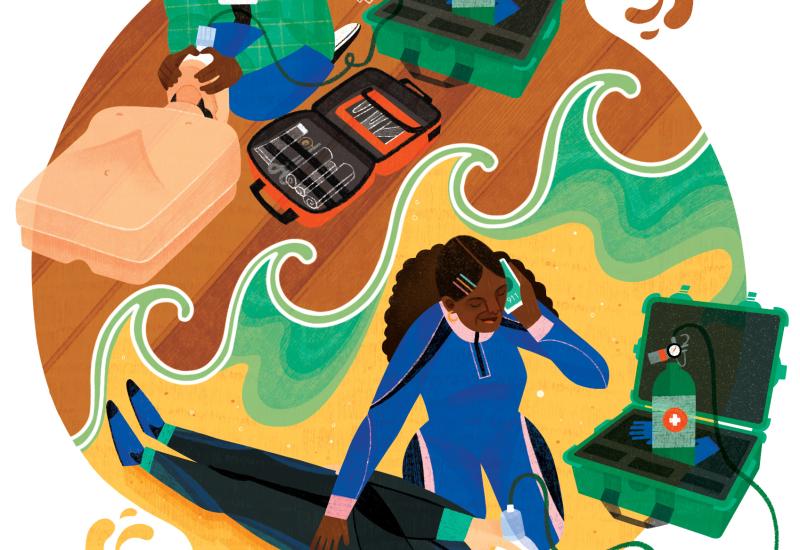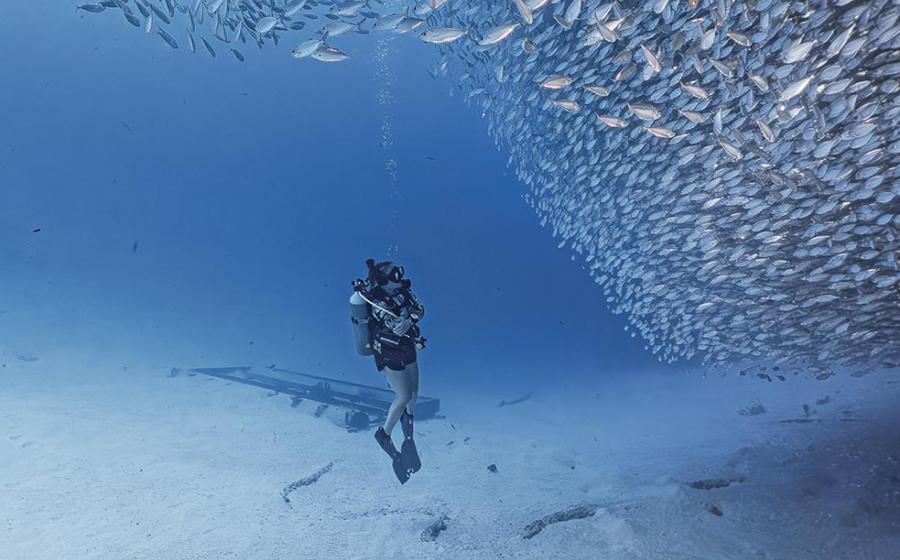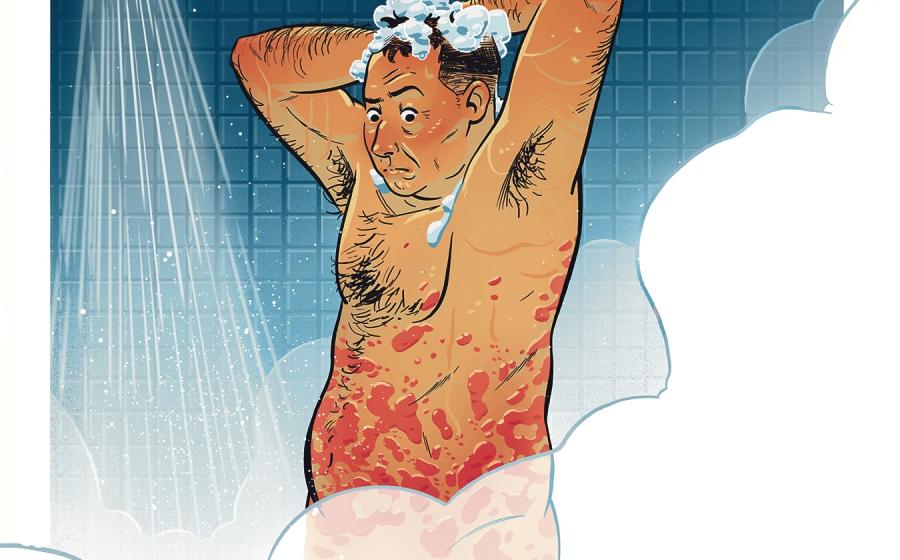What to Do About a Post-Dive Rash

Steven P. Hughes
Stan had just finished taking a shower in the dive resort when he noticed the splotchy skin on his lower back and abdomen. It looked like a rash and was a little itchy. He thought something irritating may have gotten inside his wetsuit. Later, the boat captain told him it might be a sign of something more serious.
The Diver
Stan was an experienced diver in his mid-40s. He made two or three dive trips each year. He was overweight but had no known medical conditions.
The Dive
This was to be Stan’s third, and last, day of diving. He was diving on air. Stan stayed within his no-decompression limits, but he pushed them regularly during multilevel dives, trying to get as much time underwater as possible. His profiles on his last day were 65 feet of seawater for 80 minutes, followed by a dive to 64 feet for 71 minutes. He had just over an hour of surface interval between those dives.
The Incident
Stan felt tired when he returned to his room and decided to take it easy that afternoon. He planned to fly home early the next morning on a small, unpressurized airplane and then a larger commercial jet.
When the boat captain heard Stan’s story and saw his abdomen, he recommended they contact a medical facility on the next island over. They sent the physician photos of the blotchy skin.
The doctor recommended Stan receive 100 percent oxygen and be monitored for additional symptoms. The captain completed a field neurological exam, which revealed no immediate problems other than tiredness and blotchy, itchy skin.
Related Reading: What Happens if You Miss a Decompression Stop?
Analysis
The photographs they sent to the doctor showed typical skin mottling of the abdomen. With the recent history of diving and the sudden onset of the symptoms, the doctor determined Stan had what is known as skin bends.
Decompression sickness (DCS) is caused by the buildup of excess nitrogen in the body. It can manifest in several different ways, from joint pain to neurological symptoms. It can also show up under the skin and look like a rash or bruising. It is thought nitrogen bubbles form in small blood vessels below the skin, often in fatty tissues with poor circulation.
Typically, skin bends symptoms resolve themselves without further concern. The problem is, there may be other symptoms that can manifest as time goes on. That is the reason for the oxygen first aid and the physical examination to rule out additional problems that haven’t been identified.
Stan received two hours of oxygen first aid, and his symptoms had resolved by the next morning.
It’s important to understand this case because the skin bends symptoms easily could have been a red flag indicating bigger issues. DCS is relatively rare, but it should be taken seriously.
Stan had a flight scheduled the next morning. Rules for flying after diving state that after multiple dives, or multiple days of diving, a diver should wait 18 hours before flying. He was barely within the limits for a normal situation without symptoms present. If he had flown home as he was, it might have turned into something worse.
Commercial airplanes are not pressurized at the equivalent of 1 atmosphere of pressure. They are closer to 8,000 feet above sea level or 75 percent of sea level pressure. The reduced pressure, like driving up a mountain, can cause excess nitrogen in the body to continue to offgas and cause more severe problems.
Every diver should learn to identify the signs and symptoms of DCS.
Some of the basics are:
- Unusual fatigue
- Itchy skin
- Pain in the joints, or arm, leg or torso muscles
- Dizziness or vertigo
- Ringing in the ears
- Numbness, tingling and/or paralysis
Stan spent six more days on the island before the doctor cleared him to fly. After the incident, he began diving more conservatively and using enriched air nitrox, which extends no-stop time, as well.
Related Reading: The Danger of Losing Your Dive Weights
Lessons for Life
- Get PADI Rescue Diver training: Know how to administer oxygen and respond to a diving emergency.
- Don’t delay: Divers often don’t admit to problems for hours, even after it has become obvious there is an issue. Identify symptoms of DCS and seek help. Timely treatment is often more effective.
- Dive conservatively: Don’t push your no-decompression limits, even if your computer tells you that you can stay a little longer. Stay hydrated, and get enough rest between dives.










